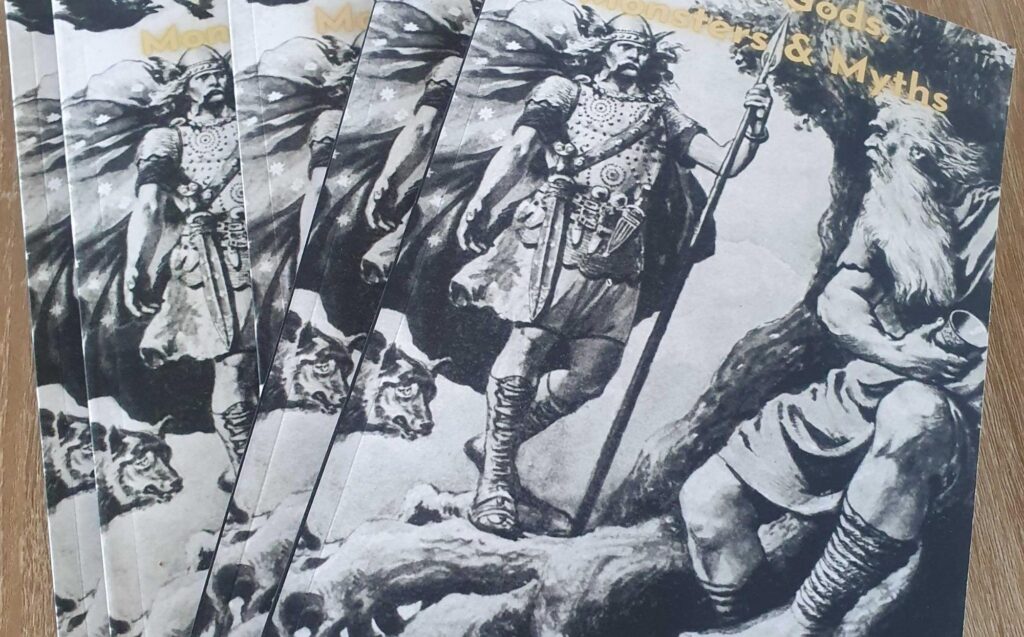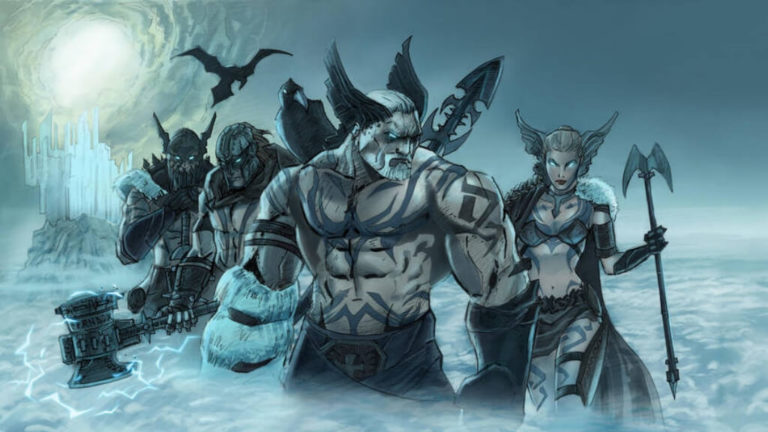Reading time : 13 minutes
The Vikings are famous for being ferocious warriors that terrorized their way through Europe for the pure pleasure of war. Their conquests were for loot, prestige, pleasure and revenge.
Viking gods and Norse mythology reflected the warrior lifestyle of its Viking followers. They waged bloody wars across the cosmos, fought with giants and monsters, and prepared for the final battle at the end of the world, Ragnarok.
Here our videos about norse gods, that you can find on our youtube channel:
Discover the ruthless, contrary and intriguing gods of the Viking world.
Ymir
The primordial being from whose flesh the world was created, Ymir (see full article) is an essential character in the Norse mythology of creation. Ymir, whose name means ‘screamer’ in old Norse, came into being when the melting ice of Niflheim (World of Mist) came into contact with hot air from Muspell (Realm of Fire).
He then became the progenitor of the frost giants of Norse mythology, which sprang from his legs and armpits. The frosts that created Ymir kept melting, and the drops created the divine cow Audumla, from whose udders flowed rivers of milk, which sustained Ymir.
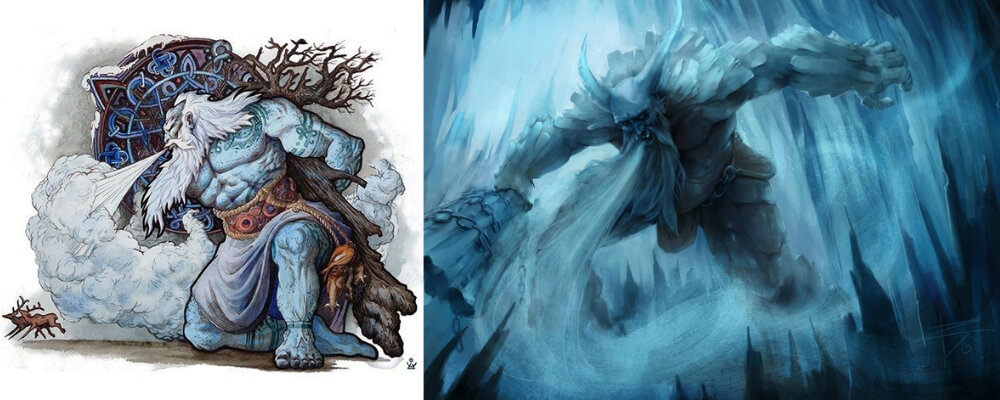
According to Norse mythology, Ymir was slain by the first of the Viking gods, Odin, Vili and Ve (see below). These three brothers were sons of a pair of primordial giants named Bor and Bestla. Wary of the growing number of frost giants springing from Ymir, the brothers decided to kill him.
All but two of Ymir’s giant children drowned in the oceans of blood that flowed from his body. The brothers then used Ymir’s slain body to create heaven and earth. His blood created the lakes and seas, they used his bones to fashion mountains, trees were formed from his hair, and clouds from his brains.
Finally, from Ymir’s eyebrow they created Midgard, the realm of men. They shaped dwarves that from the maggots that infested Ymir’s flesh.
Odin
Odin was the king of the Aesir Norse gods and the Viking god of both knowledge and war, as well as death, healing, kingship and sorcery. As his areas of influence suggest, Odin embodied many contradictory aspects, including some notably feminine elements. At one point he was expelled from Asgard for engaging in feminine magic. Most of the Viking gods had many names with different meanings.
Odin’s other most used name was Alfadir, meaning ‘Allfather’. The Norse god family tree is quite complex: there were many cases of incest, and many gods were born from affairs with other being, especially giants. Odin sits at the peak of the norse god family tree. Odin’s two brothers, the Celtic gods Vili and Ve (see below), do not appear to have had children.
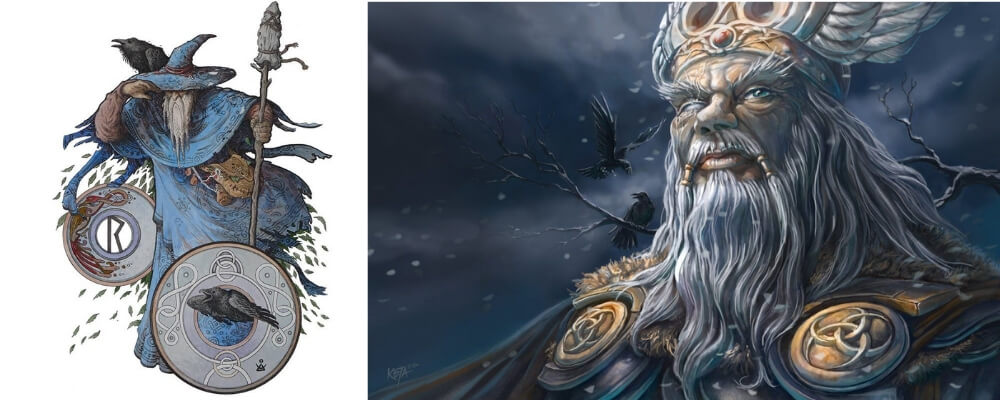
In his search for knowledge, Odin often threw off his divine kingship and wandered the world as a haggard traveller. He was also willing to make great sacrifices for knowledge. He is said to have given his eye for an elixir of knowledge from the Well of Wisdom at the base of the Tree of Life, Yggdrasil. He was also said to have hung himself from the same cosmic tree for nine days while pierced by his own spear in order to gain knowledge of the runic alphabet, which he then gifted to man.
As the Norse god of war, Odin was not portrayed as a noble warrior who campaigned for justice, but rather as bloodthirsty and lusting after war and victory for its own sake. He was known to incite otherwise peaceful people to strife with almost sinister glee.
He himself was considered like one of the Viking Berserker warriors, who would work themselves into an ecstatic frenzy. The Berserkers unified with the raw animal forces of a wolf or a bear in order to be more ferocious in battle. Like his adopted son Loki, Thor was a shapeshifter.
Odin was also the king of Valhalla, the place in the afterlife where the best warriors would dwell until Ragnarok, the end of the world, when they would fight by Odin’s side. He could also use the magical art of necromancy to communicate with the dead and gain their knowledge.
From his throne in Asgard, Odin could observe everything that happened in the nine worlds of Norse mythology. More information was also brought to him by his two companion ravens Huginn (thought) and Muninn (memory). The raven was often used as the symbol of Odin.
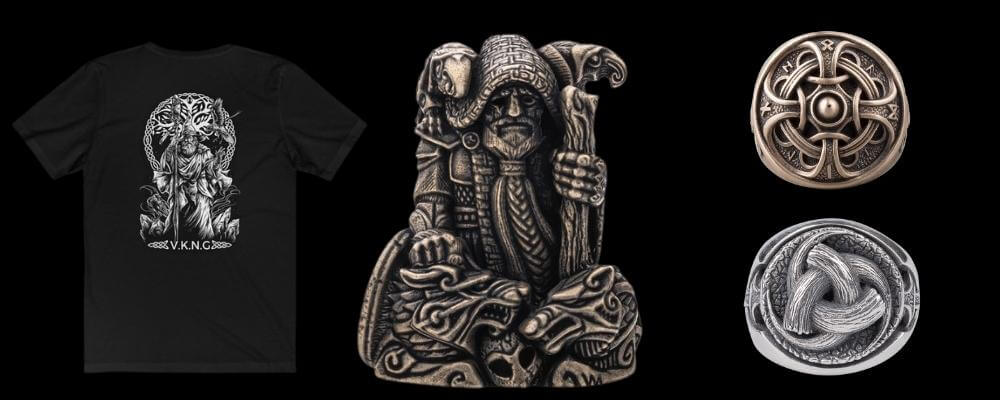
Thor
The Norse god of thunder, Thor, whose name means ‘thunder’ in old Norse, was the epitome of a mighty warrior: strong, brave, but also reckless and easily enraged. Son of Odin and the giantess Jodr, Thor was considered the strongest of all beings.
Nevertheless, Thor’s strength was still amplified by some specially crafted accessories. He possessed special iron gloves, the belt of Megingjard that doubled his strength and, of course, his mighty hammer Mjolnir. Strangely enough, as well as a warrior and Viking god of thunder, Thor was considered a god of agriculture and fertility.
This was probably due to his power over thunder and lightning, which was linked with all important rain. Thor may be linked with the Celtic god Donar.
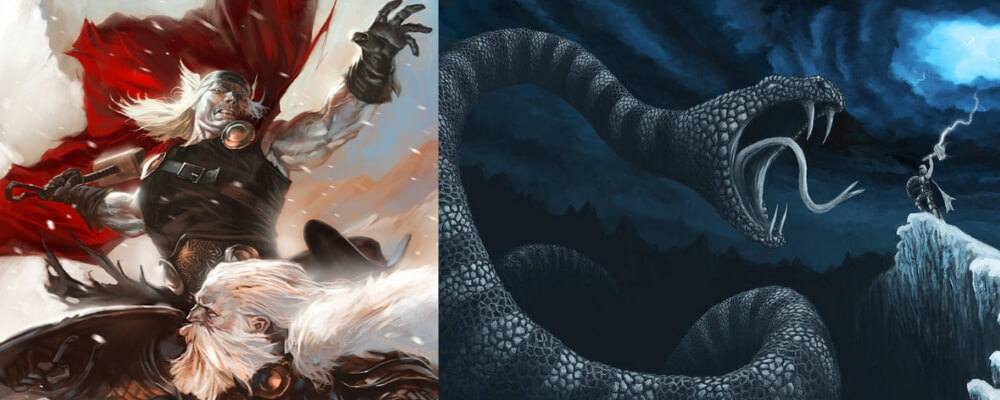
As the ever-vigilant protector of Asgard, the realm of the Aesir Norse gods, Thor had many enemies. Thor’s most prominent nemesis was the Midgard Serpent, known as Jormungand. A son of Loki, this giant serpent was thrown into the Midgard sea to prevent him from causing trouble. Jormungand grew to such a great size that he could surround all of Midgard with his body.
Thor encounters the serpent on a famous fishing trip where Thor’s ego leaves him dissatisfied with the giant whales he was catching. He goes further out to sea and encounters Jormungand. A mighty battle is only prevented when Thor’s giant fishing companion cuts the line out of fear. Legend has it that Thor and Jormungand will battle to the death during Ragnarok.
Most of the Norse gods are doomed to die during Ragnarok, but Thor’s two sons, Modi with his wife Sif and Magni with his giantess mistress Jarnsaxa, are prophesied to survive, inherit Thor’s hammer, and use it to restore order. Thor also has a daughter, the goddess Thrud, with his wife Sif.
Norse men and women appealed to Thor for protection, comfort and blessing. He was also called upon to hallow places, things and events for their intended purpose, and also to hallow weddings.
When Christianity came to the Viking world, it seems that Thor was the most popular Norse god held up in competition to Christ. More amulets and charms featuring Thor’s hammer date from the period when Christianity and Norse religion were in contention than from any other period.
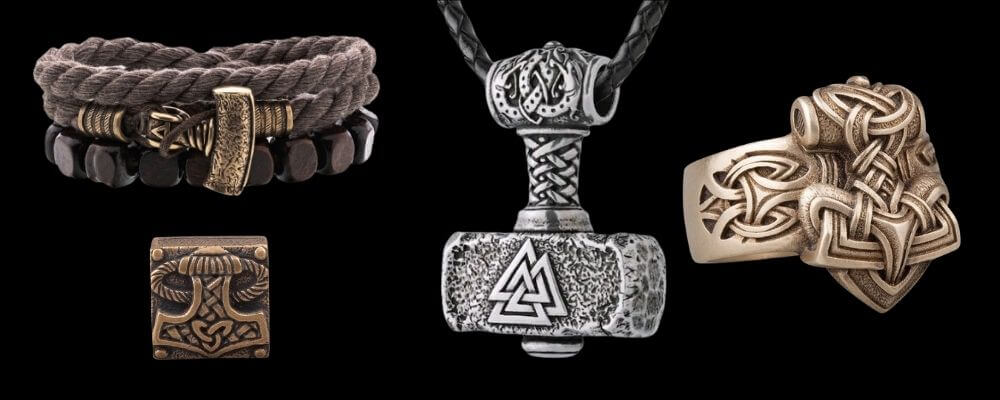
Frigg
Queen of the Aesir Norse gods and consort of Odin, Frigg, whose name means ‘beloved’ in old Norse, was the goddess of the sky and had special powers of foreknowledge. She is said to have known everyone’s destiny, but never to have revealed it. As the mother of the Norse gods Balder, Hod and Hermod, she was also often associated with fertility, motherhood, marriage and domestic matters.
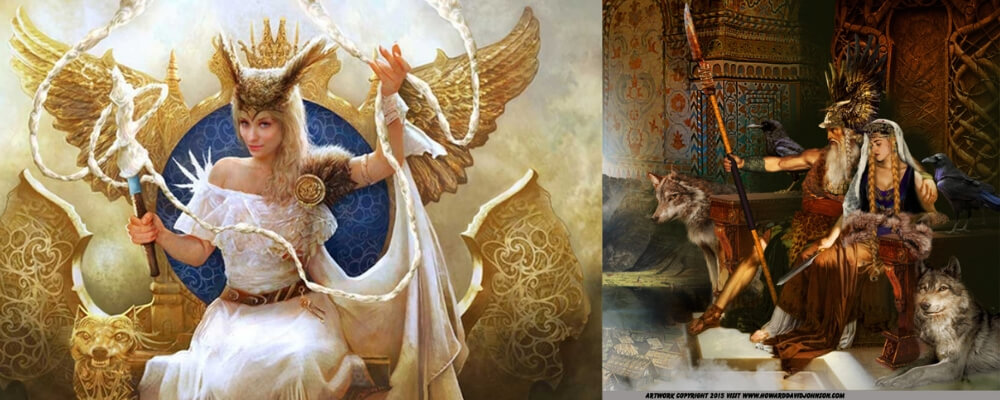
The goddess Frigg was represented as the ideal mother. When her son Balder was born, she extracted oaths from every creature, object and force in nature that they would never harm him. Unfortunately, she forgot mistletoe, leading to Balder’s death (see below).
Freya
Twin sister to the male fertility god Freyr (which means ‘lord’), Freya, which simply means ‘lady’ in old Norse, was the Norse goddess of love and fertility. She was actually one of the Vanir Norse gods that battled with the Aesir gods, but she pledged her loyalty to the Aesir after the conclusion of their war.
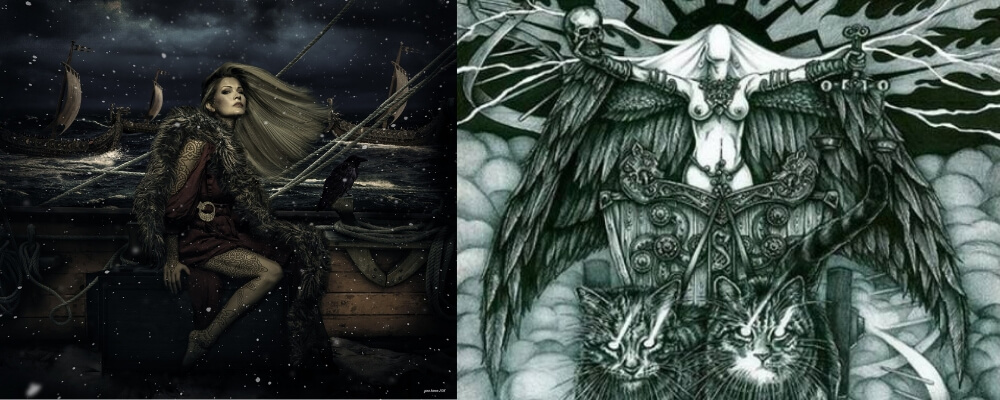
The most beautiful of all women, she had powers on par with those of Odin when it came to the dead, taking the warriors not taken to Valhalla to her own realm. Some stories suggest that she in fact had first choice of the fallen. Freya was also considered to have the power to influence a person’s destiny and fortune.
She was associated with a form of magic called Seidr, which involved discerning the course of fate and working within its structure to bring about change, weaving new events into being. This was considered feminine magic, and is one of the magics that Odin was also thought to practice.
Freya was often described as free with her love and as a bit of a pleasure seeker. For example, she so desired the necklace Brisingamen, which was the most beautiful thing ever crafted by the dwarves, that she agreed to spend a night with each of the four dwarves that made it.
She thought the necklace was the finest example of their skill, and considered sharing her insurmountable skills in love and pleasure with them as fair payment.
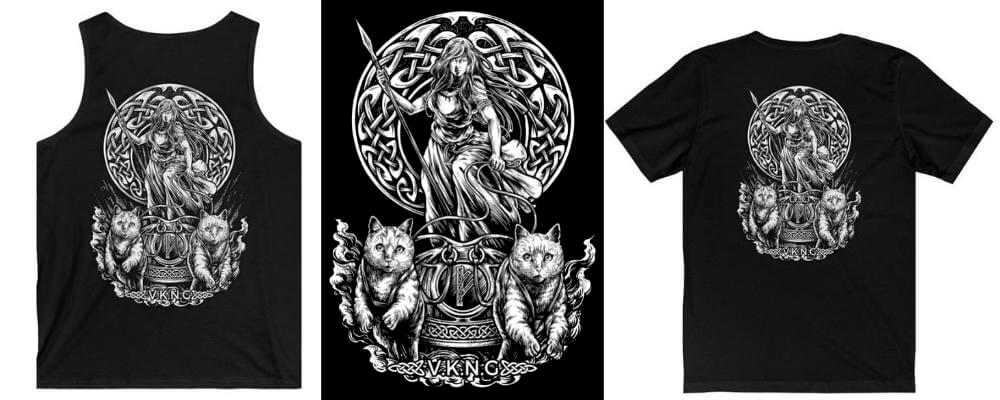
Balder
Son of Odin and Frigg, Balder was the Norse god of light and purity and epitomised the effulgent summer sun itself. He was characterised as a fair, wise and gracious divine being of beauty and elegance.
His name, Balder or Baldur literally meant ‘brave’ in old Norse. He was said to be beloved by both gods and men and considered the best of all the gods.
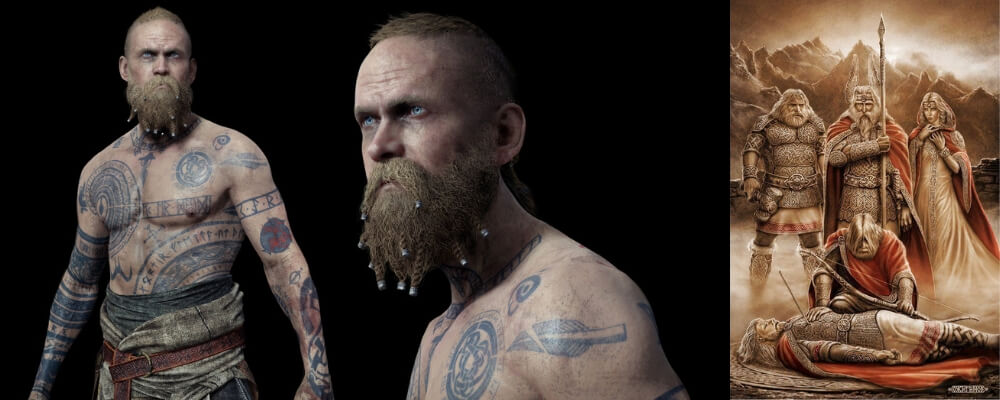
Unfortunately, Balder is most famous for his tragic end. Upon his birth his mother, the goddess Frigg, impeached all the powers in heaven and earth to swear never to hurt her son, making him impervious.
Thinking this a merry game, the gods would often use him as a target for knife throwing and archery as the blades would simply bounce off him.
Unfortunately, Frigg forgot a small plant called mistletoe in her work, and the cunning and jealous Loki tricked Frigg into revealing this secret. Loki subsequently gifted Balder’s blind brother Hodr a mistletoe dagger, which killed Balder when it was thrown at him.
Upon Balder’s death, Odin convinced the goddess of the netherworld Hel to return Balder to the land of the living. She agreed on the condition that everything in the world, dead or alive, must weep for him. In all the world only one giantess, who was probably Loki in disguise, refused to weep and Balder could not return. Hodr was executed for his part in his brother’s death.
Tyr
Tyr was the Norse god of war, heroic glory and the formalities of conflict. Little is known of Tyr’s origins, perhaps because he was the most important Celtic god before being supplanted by Odin. In old Norse Tyr simple means ‘god’. Due to his link with the formalities of conflict, he was often treated as the Norse god of justice and oaths.
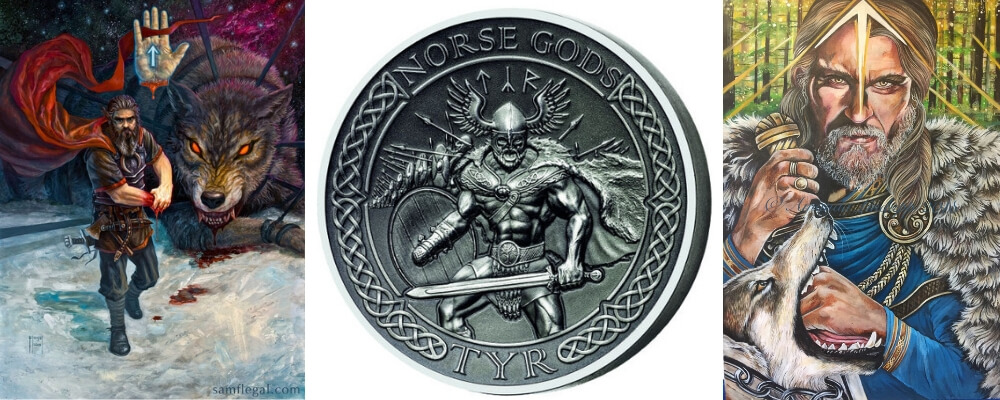
Tyr was considered the bravest and most selfless of the Norse gods due to his role in subduing the giant wolf Fenrir, a son of Loki. The gods wanted to keep Fenrir chained up in order to keep him from wreaking havoc.
They tried many chains, convincing Fenrir to put them on by suggesting that it was a game and a test of his strength. Fenrir broke each easily. Finally, the gods got a special chain made by the dwarves that was both strong and light.
Fenrir was suspicious, and only agreed to put the chain on if one of the gods put their hand in his mouth as a sign of good faith. Tyr agreed to this knowing that he would lose his hand, which Fenrir bit off.
For this reason, Tyr was usually depicted one-handed. He was still a magnificent warrior, and went on to slay Garm, the guard dog of the goddess Hel.
Bragi
One of the sons of Odin, Bragi was the Norse god of eloquence and poetry. Bragr means poetry in old Norse. Bragi had runes carved on his tongue, and he was a muse for men by letting them drink the mead of poetry.
He was also connected with oaths, which were sworn over the Cup of Bragi. This cup was also used when a new king ascended to the throne or died.
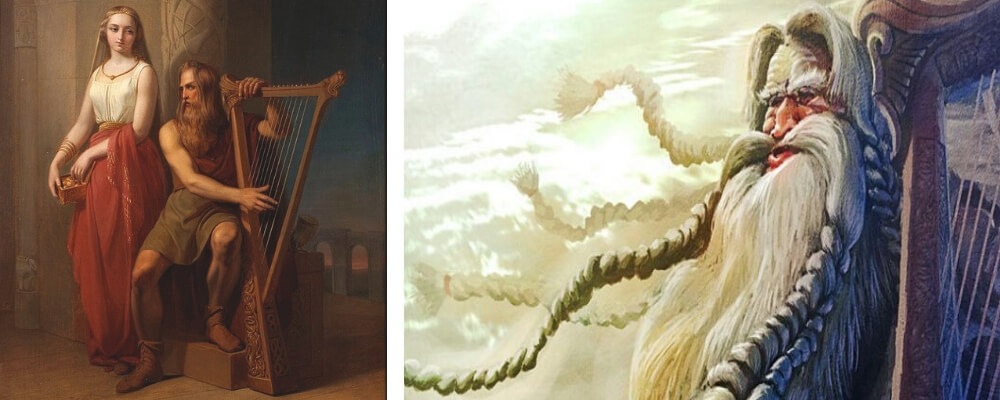
He may have been considered somewhat cowardly among the Norse gods. A possible son of the goddess Frigg, in one telling of the death of Balder, Frigg complains that if she had another son as brave as Balder, then Loki would have to fight for his life.
In another story, Bragi forbids Loki to enter the hall of the Norse gods, but is overruled by Odin. Loki then greets everyone, except for Bragi. Bragi offers Loki a number of gifts as a way to make peace, but Loki responds by accusing him of cowardice.
Loki
The trickster god with the power to shapeshift, Loki was the son of frost giants, adopted by Odin. Loki is never presented as purely evil, but rather as chaotic and cruel and having little consideration for the consequences of his actions. Supremely clever, he often creates complicated problems, to which he presents the solution, which always brings more trouble.
Loki is variously represented as the Norse god Thor’s comrade or nemesis in the different surviving myths. Nevertheless, it was foretold that Loki would be responsible for the deaths of many of the Norse gods during Ragnarok – the end of the world.
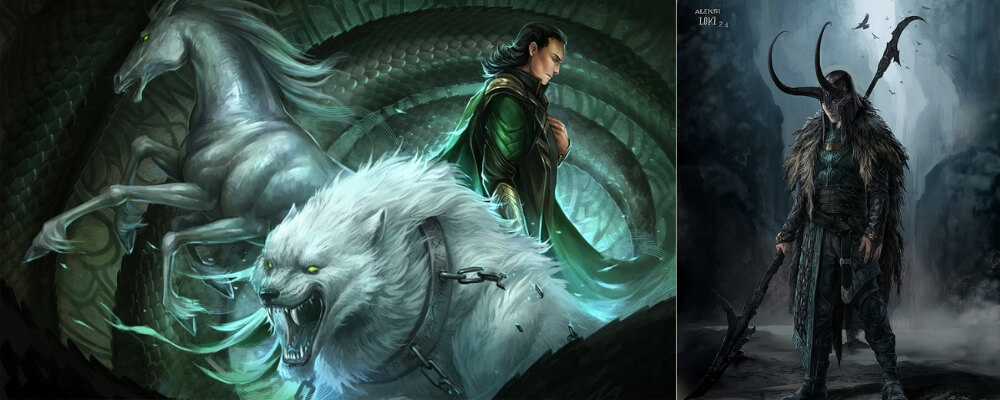
Loki was a shapeshifter, which made him both the father and mother of many children. With his giantess mistress Angroboda he had three children, the giant wolf Fenrir, the Midgard Serpent Jormungand, and Hel, the Norse goddess of the underworld.
With his wife Sigyn he had a son Narfi, who was killed by his half brother by an unknown mother, Vali. Loki was also the mother of Sleipnir, Odin’s eight-legged steed. He conceived Sleipnir when he shapeshifted into the form of a mare to mate with the stallion Svathlifari. Loki’s many children add further complications to the Norse god family tree.
In punishment for his role in the death of Balder (see above), Loki was chained to three large boulders and a poisonous snake placed above his head.
The dripping venom from the snake was caught in a bowl by Loki’s wife Sigyn, but when the bowl filled and she needed to leave to empty it, the poison dripping on Loki’s face made him twist in agony, causing earthquakes.
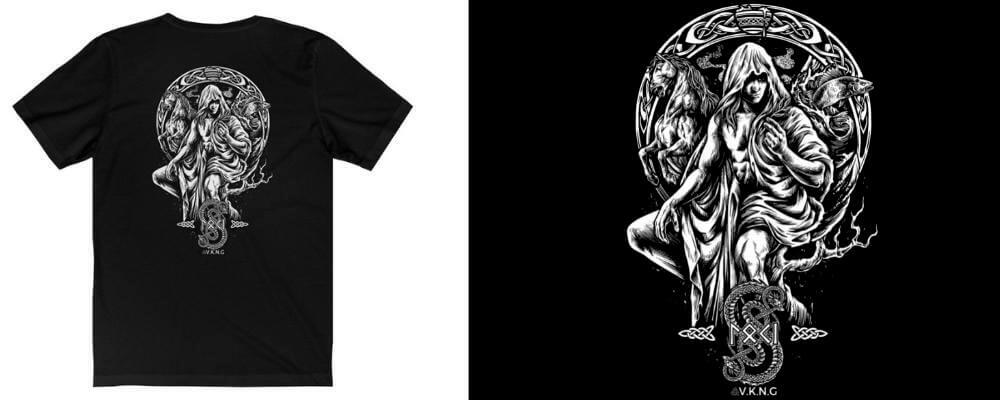
Hel
The ruler of the netherworld, also called Hel, the Norse goddess Hel was the daughter of Loki and the giant Angrboda. It was her job to judge the souls that entered her realm and decide their fate.
She is often portrayed in Viking sagas as partly decomposed, having the face and body of a living woman, but the legs of a corpse. She was considered extremely powerful, perhaps more powerful than Odin, at least inside her own realm, which is how she could prevent Odin from returning Balder to the living.
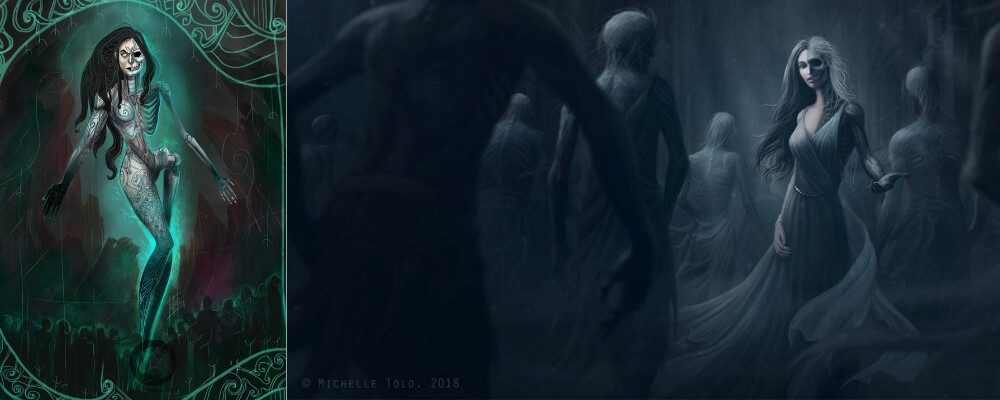
While Hel is sometimes depicted as greedy, harsh and cruel, she is more often presented as indifferent to the concerns of the living and the dead. Perhaps a reflection that death comes to all, indiscriminately.
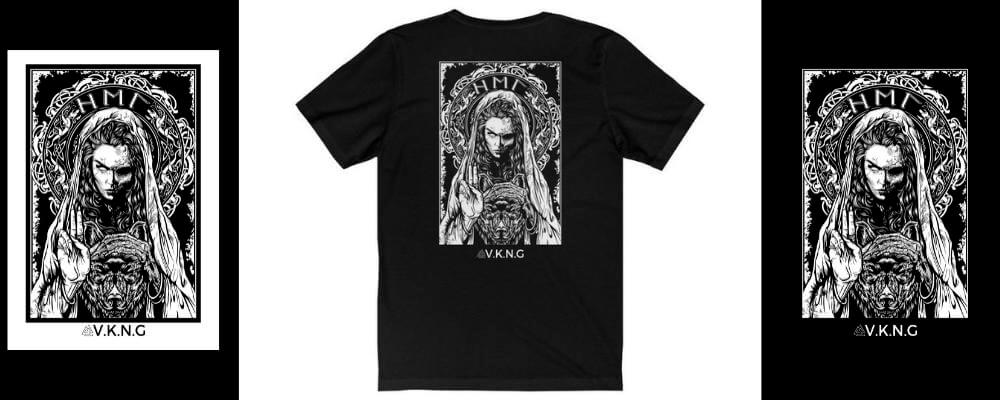
Heimdall
The ever-vigilant guard of Asgard, the home of the Aesir gods, the Viking god Heimdall possessed the horn Gjallarhorn, which he used to sound the approach of intruders.
It was his duty to prevent the giants from forcing their way into Asgard. As a divine guard he possessed keen eyesight and hearing as well as vast sources of energy that allow him to go with very little sleep.
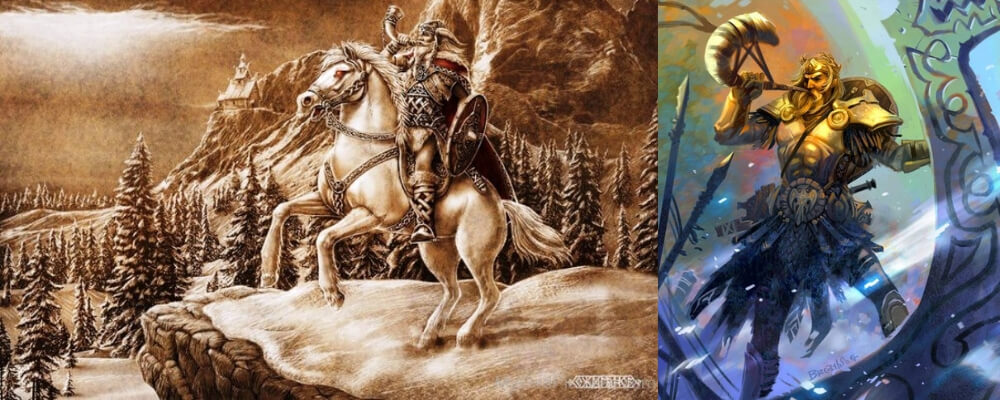
One old Norse poem suggests that Heimdall may have been the father of humankind and was responsible for creating the hierarchy of classes among men.
Heimdall is often described as a companion, or servant, of the Viking god Thor. In one story from Norse mythology, Thor’s hammer is stolen by the frost giant Thrym. In order to retrieve Thor’s hammer, it is Heimdall who suggests that Thor dress up as a woman to trick Thrym into thinking that he is the Viking goddess Freya, whom Thrym wishes to marry.
Thor objected to the plan, complaining that it was dishonourable and unmanly, and that the other Viking gods would mock him for the rest of his days. But thanks to some cunning words from Loki, Thor agreed. Disguised as women, Thor and Loki travelled to the kingdom of Thrym and tricked him into commencing a marriage ceremony with Thor.
When the hammer, which Thrym had hidden, was called upon to hallow the union, Thor grabbed it and killed Thrym.
Freyr
Along with his sister Freya, Freyr is one of the Vanir Norse gods rather than the Aesir Norse gods. However, Freyr lived among the Aesir gods having arrived in Asgard as a hostage at the close of the Aesir-Vanir war.
He was the most important deity when it came to fertility, both sexual and ecological. He was a god of bountiful harvests and virility, and was symbolised by the boar, which was often sacrificed to him (and then eaten by the guests) at marriage ceremonies.
Freyr was probably linked with a popular Celtic god, as many Celtic people sacrificed boars at weddings, and some Celtic priests used chariots pulled by boars in certain rituals, which Freyr was also said to use.
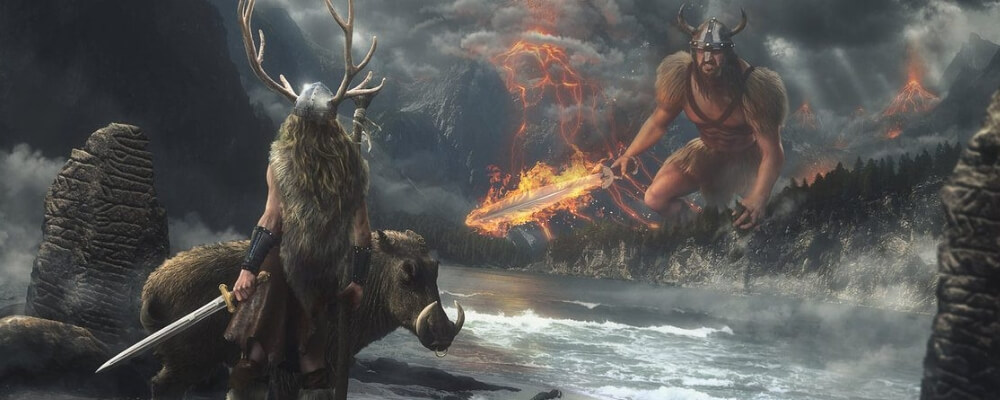
In one story, Freyr secretly uses the throne of Odin and can see all over the nine worlds of Norse mythology. He spots the most beautiful woman he has ever seen, the giantess Gerd, and falls instantly in love.
Not knowing how he will gain his love, he falls into a deep depression. When his father learns of this he decides to help and sends a servant named Skirnir to deliver a marriage proposal. At first Skirnir offers Gerd apples of youth if she agrees to the proposal, but she refuses.
Next, he offers her the ring Draupnir, which had the magical quality of creating eight new rings of equal quality every ninth day. Again, Gerd rejects the offer.
Finally Skirnir threatens to curse her, and she gives in. However, she insists that Freyr wait nine days before they marry in order to torture him. They did eventually marry – ah, true love.
Sif
Little is known about the Norse goddess Sif, her name simply means ‘wife’ or ‘bride’ in old Norse. She was the wife of Thor and had beautiful golden hair, which probably represented the golden harvest, as she was a fertility goddess.
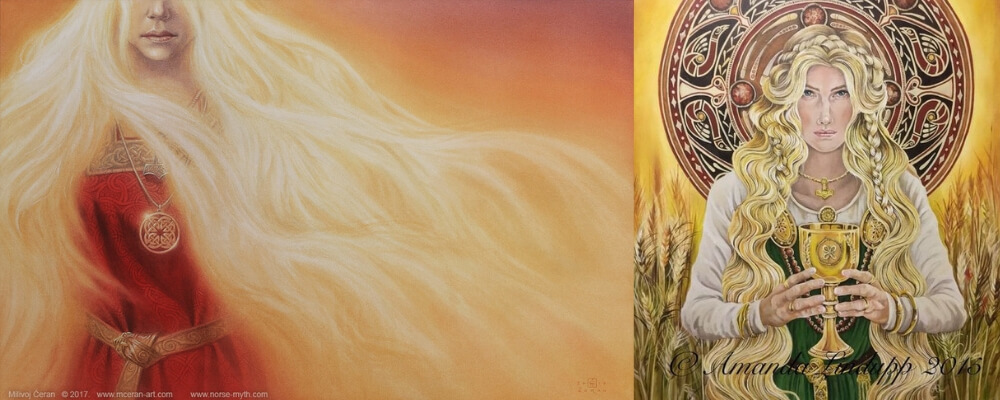
She is best known from a myth where Loki sneaks into her bedroom and cuts off her hair. A furious Thor demands that Loki replaces the hair. Loki asks the dwarves to spin gold as fine as Sif’s hair and imbue it with magic so that it will grow on her head.
The dwarves agree to make this, and Loki gives it to Sif, ending this feud with Thor. Along with the hair, the dwarves produce Odin’s spear Gungnir that never misses its target; Freyr’s ship Skiobaonir and golden boar Gullunbursti; the multiplying ring Draupnir; and Thor’s hammer Mjolnir.
Forseti
Son of Balder, Forseti was the Norse god of justice. He is described as an extremely peaceful god who spends much of his time meditating. He lived in Asgard in a beautiful building called Glitnir.
This means shining in old Norse, and the house had a silver roof and gold pillars and radiated so much light that it could be seen from a great distance.
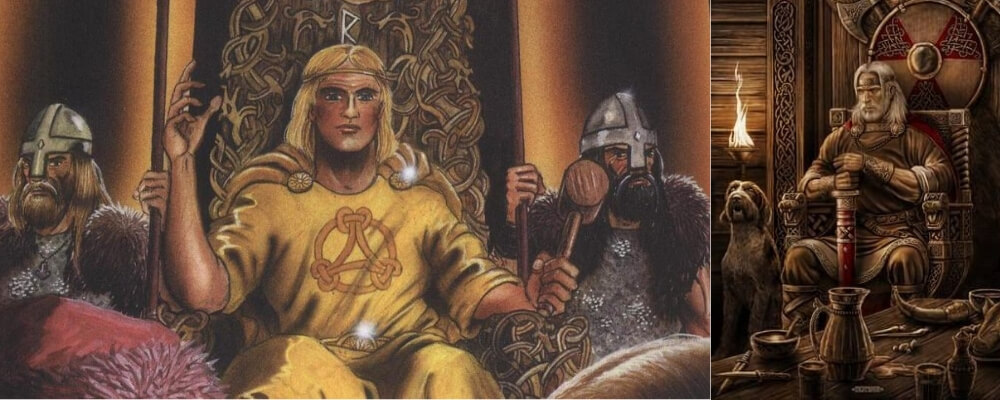
It also served as a court of justice where all legal disputes among the gods were settled. Forseti was probably the divine equivalent of the logsogumadr, or lawspeaker, that headed Norse legal assemblies. Forseti means ‘the one who presides’ in old Norse.
Ve
Another son of the primordial giants Bor and Bestla, according to Norse mythology it was Ve, with his brothers Odin and Vili, that created the world from the body of the primordial being Ymir (see above).
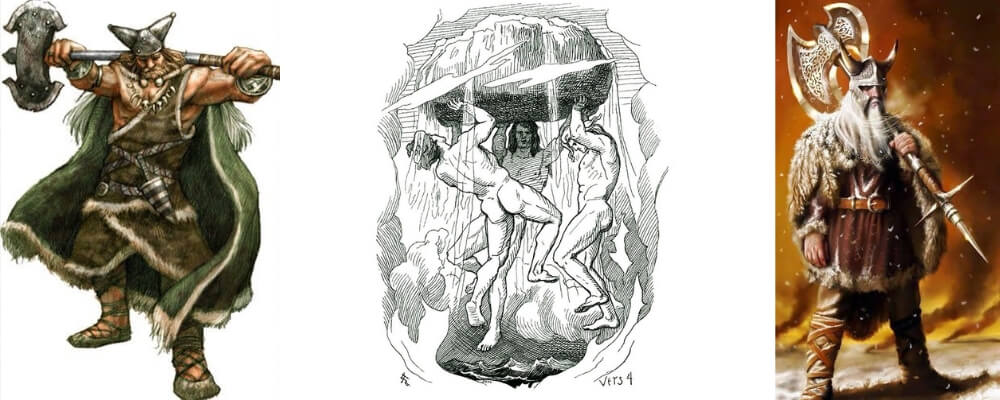
Apart from the story of the making of the world, both Ve and Vili only feature in one surviving story from Norse mythology. In this story Odin is temporarily exiled from Asgard for practicing ‘unmanly’ magic. During this time, both Ve and Vili are said to have slept with Odin’s wife Frigg.
Despite their absence in the sagas, Ve and Vili were probably important Celtic gods as there is evidence for their worship in pre-Viking times as well. Odin, Vili and Ve, whose names mean ‘inspiration’, ‘conscious intention’ and ‘sacred’ respectively, represented some of the most basic forces that distinguish society and the Norse cosmos from chaos.
